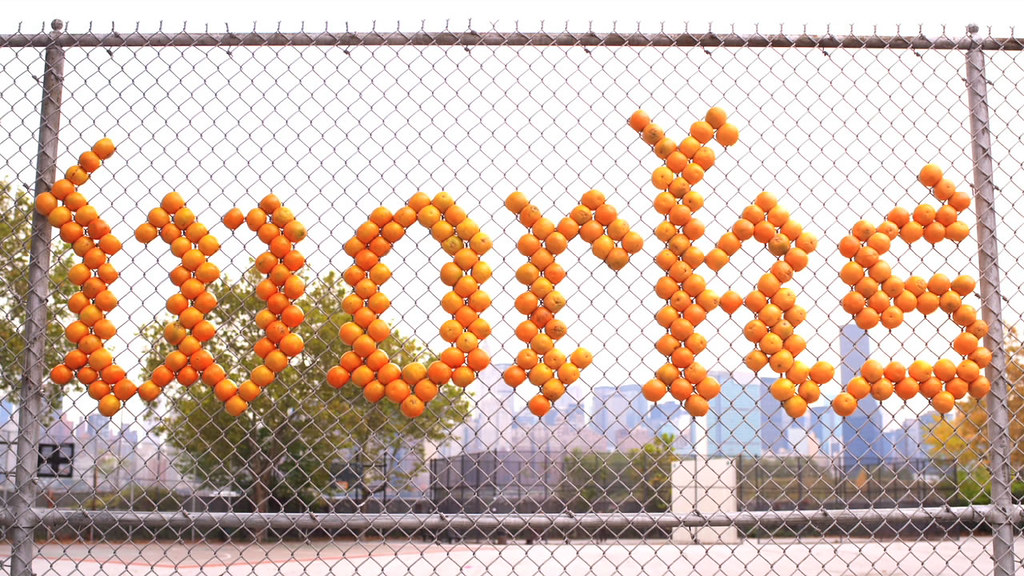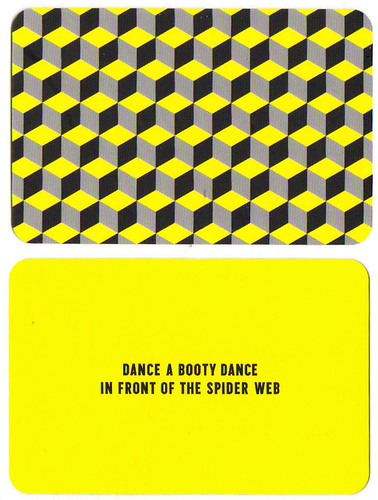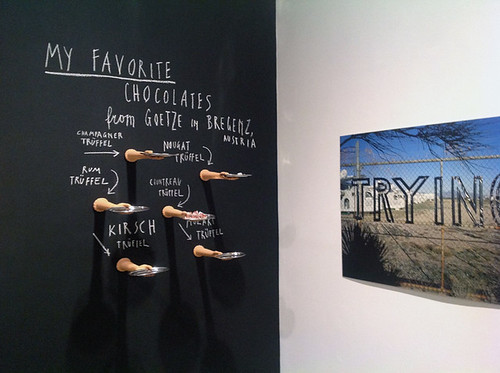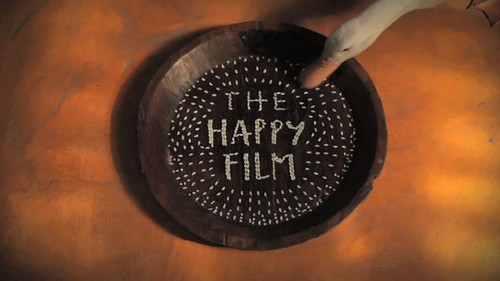Sunday, 8:12pm
15 April 2012
Gumballs in Philadelphia
Joan K. Smith reviews The Happy Show’s mix of art, design and science

So I didn’t eat one of the chocolates, or chew one of the happiness-rated yellow gumballs, writes Joan K. Smith. I most certainly didn’t ‘Do a booty dance in front of the spider web’ as my wall-dispensed card advised (below).
I didn’t pedal the bicycle that generated neon messages (due to the long line of others waiting to do it). But the all-encompassing experience that is Stefan Sagmeister’s ‘The Happy Show’ at the Philadelphia Institute of Contemporary Arts (ICA) did put a smile on my face.
Above: front and back of card from dispenser, Sagmeister.
Philly ICA, never an institution to shy away from re-contextualising culture and art, has a long tradition of giving artists free rein to transform the exhibition space. And if ever there was a subject worthy of being set loose in the ICA, it would be iconoclastic designer Stefan Sagmeister, who has made a career of sidestepping industry conventions, in favour of provocative and roguishly fashioned work that goes beyond design functionality to exist as conceptual art in its own right.
Above: installation view. Visitors are invited to indulge in a selection of chocolate truffles (left), alongside the first image in the aptly named series Trying To Look Good Limits My Life (right).
So in lieu of a traditional retrospective – which could easily fill the ICA’s expansive second-floor galleries and Ramp area – ‘The Happy Show’ is an interactive, immersive installation challenge where Sagmeister not only ‘transgresses the boundaries of art and design’ but blithely transgresses the boundaries of the museum space. From hand-drawn missives on bathroom mirrors and elevators to giant inflated monkeys on the building exterior, ‘The Happy Show’ essentially occupies everything but the first floor gallery (where another exhibition, First Among Equals, resides).
The theme of ‘The Happy Show’ is Sagmeister’s ten-year exploration of happiness (and a precursor, or perhaps companion to, his upcoming feature film of the same name, fourteen minutes of which are shown, above and below). He offers up a mix of art, design and science that not so much documents as enacts Sagmeister’s journey – a journey that is equal parts play, self-analysis, biography, and tongue-in-cheek deconstruction. The expository, roughly hand-drawn wall texts that appear throughout the installation further personalise the experience, as if Sagmeister is whispering in your ear.
Seductively visual but content-heavy, ‘The Happy Show’ begs close exploration. Experiential twists, pithy maxims, and physical take-aways await the visitor at every turn, so many that in the noisy mob scene of the opening reception I missed a few, such as a spare change dispenser on street level (apparently fed by visitors on the upper level Terrace area).
Especially striking is the eye-popping Ramp installation, an area devoted to a massive infographic on happiness factors that includes a bank of gumball machines, each representing a different numeric happiness scale. It is also an infographic in itself, in that the volume of each machine will eventually reveal the self-reported happiness of visitors. This area is rendered in vivid yellow and black – the colors of police ‘caution’ tape – so a vaguely unsettling edge lurks beneath the undeniably cheerful surface.
Stefan Sagmeister: ‘The Happy Show’, Philadelphia Institute of Contemporary Art, 4 April – 12 August
ICA, University of Pennsylvania, 118 South 36th Street (at Sansom), Philadelphia, PA 19104-3289 US.
See also:
More about The Happy Film (report from Offset conference in Dublin, March 2012).
Sagmeister writes about a favourite source of Inspiration in Eye 41.
Above: a visitor pedals a bicycle to illuminate a neon sign in one of the interactive exhibits.
Eye is the world’s most beautiful and collectable graphic design journal, published quarterly for professional designers, students and anyone interested in critical, informed writing about graphic design and visual culture. It’s available from all good design bookshops and online at the Eye shop, where you can buy subscriptions and single issues. Eye 82 is out now – you can browse a visual sampler at Eye before you buy on Issuu.





